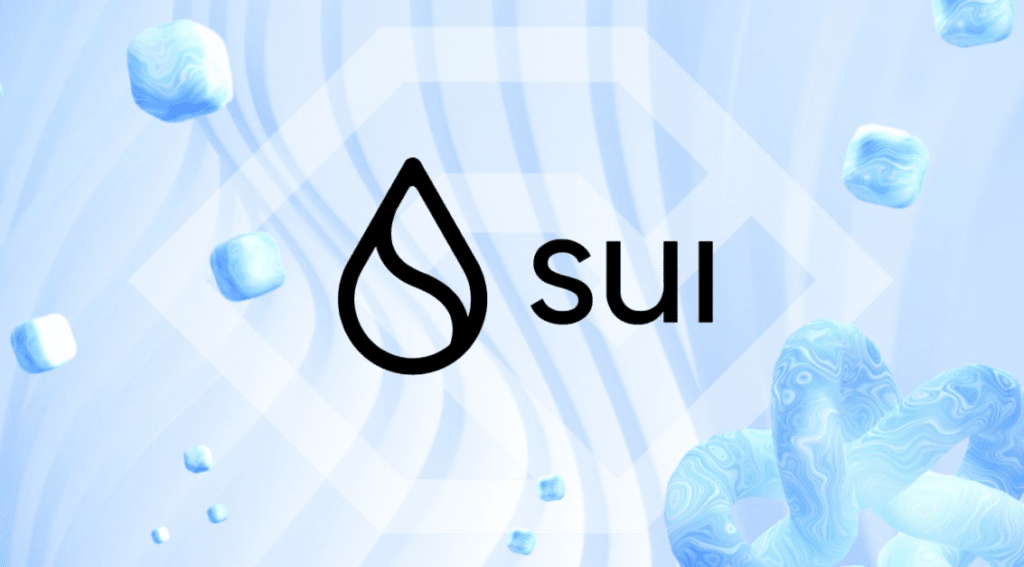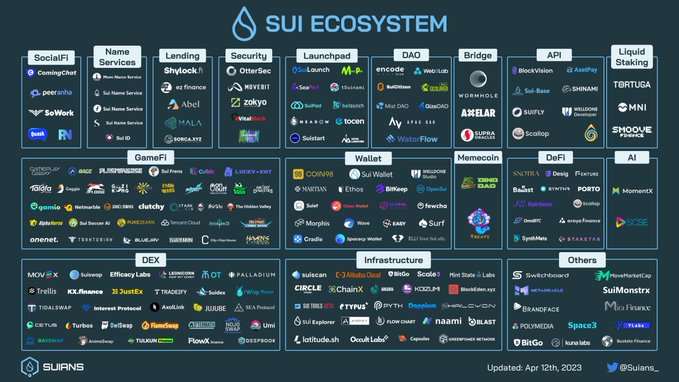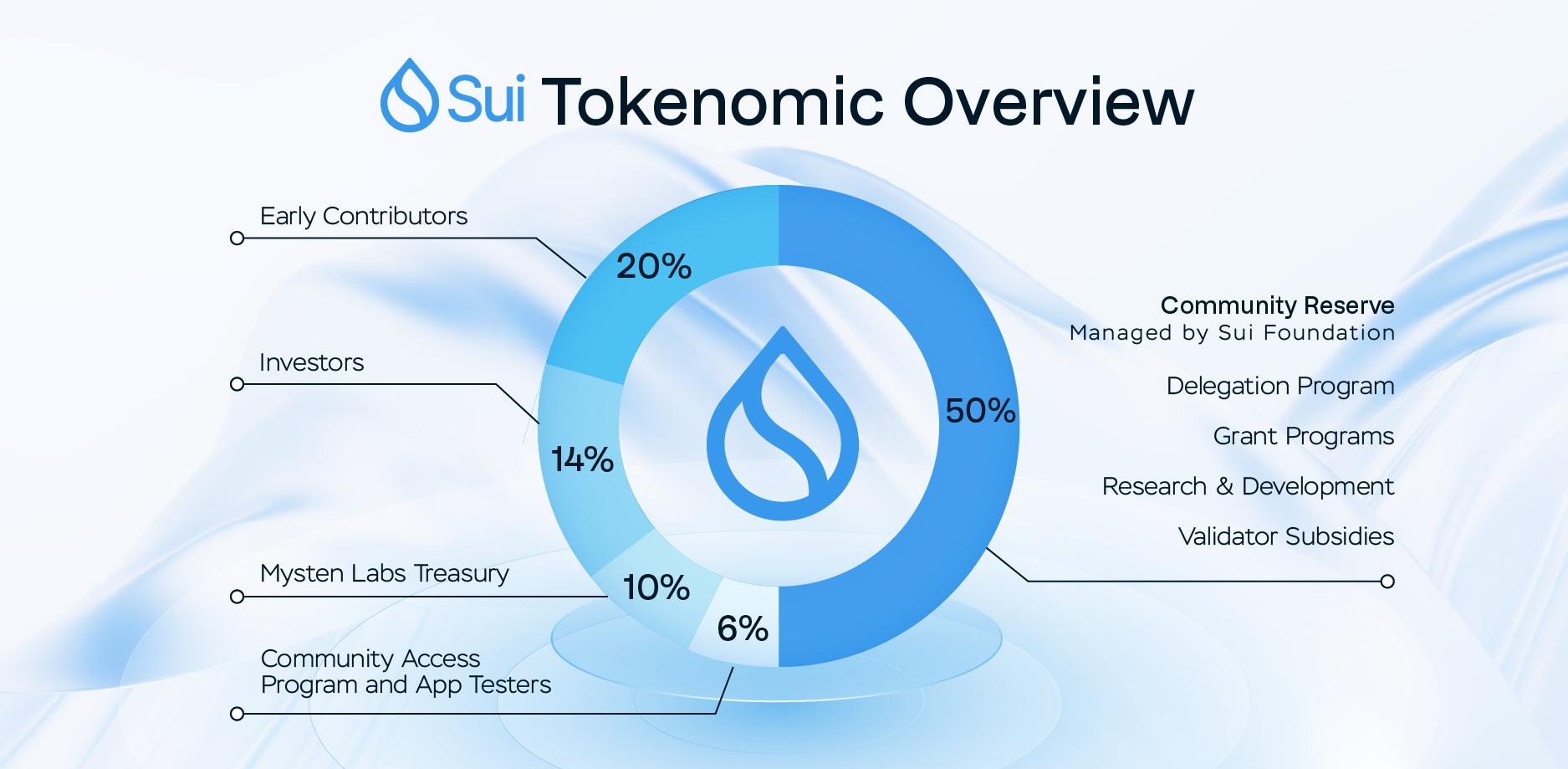
Sui is an innovative, decentralized Layer-1 blockchain that redefines the notion of digital asset ownership. Launch on May 3rd, 2023. Sui (water in Japanese), seeks to bring fluidity and flexibility to the web3 ecosystem.
In September 2022, Mystin Labs, developers of Sui Blockchain raised a $300 million series B funding round with the aim to address web3 scalability and onboard the next billion users. The round was backed by Coinbase Ventures, A16z crypto, Binance Labs, Franklin Templeton, Circle Ventures and many others VC firms.
Sui’s Core Innovations
In the L1 high-performance space, Mysten Labs innovations in consensus algorithms and data structures enable Sui Blockchain to scale throughput and storage horizontally to meet application demand while maintaining extremely low operating costs per transaction. At its core, Sui is designed to have security in its DNA: Security of assets, Security of contracts, Security of transactions, Security of the network.
Mysten Labs inaugural product - Sui - is a public Blockchain designed from the ground up to enable creators and developers, from gaming to social media to finance to build experiences that cater to the next billion users in web3.
Sui’s Key Technical Innovations
Object-centric Design: Sui uses objects as its basic unit of data storage rather than accounts, as happens on most other blockchains. Developers define, create, and manage these programmable objects that represent user-level assets. An object has distinct attributes, including ownership, whose values can be updated based on the governing logic of the smart contract that created it.
Owned objects vs Shared objects: Most assets on Sui are owned by a single address, recorded as a data value for the object. These are referred to as “owned objects.” Transferring ownership simply requires a change of that value. Some assets have shared ownership, meaning multiple accounts must authenticate a transaction that changes data related to the object. These transactions are considered complex and must be validated through consensus.
Composable objects: Not only can a person own an object, but objects can own objects on Sui, allowing them to combine into a whole new asset, which is often referred to as composable assets.
Move language
In Sui, you write Smart Contracts with the Sui Move Programming language. It's the native programming language for Sui. It's designed to incorporate everything a blockchain developer would need to create performant, secure, feature-rich applications. It was originally developed at Facebook to power the Diem blockchain. Move addresses two key issues in smart contract design: representation of digital assets and safe operations over them. Move encourages data composability, giving developers greater power and flexibility to manipulate data packages such as structs.
Sui ecosystem
Since the launch of the chain, many project have been on the network and the ecosystem is continously growing in the area of DeFi, SocialFi, GameFi, NFTs, Wallets and Infrastructure.

Sui Consensus
Sui adopts a Delegated-Proof-of-Stake (DPoS) consensus mechanism for its staking program. SUI token holders can be rewarded for holding the token by delegating it to validators. With DPoS, Sui participants can stake their SUI token as a proxy for voting power. For protocol upgrades and other Sui governance, changes will be passed through on-chain voting proposals. The SUI token gives any token holder the ability to participate in this process.
Sui tokenomics:
SUI tokens is the native token of the network. The total supply of SUI is capped at 10 billion tokens. It serves four purposes:
- They can be used to pay gas fees to execute transactions and other operations.
- They can be staked to a validator in order to secure the network and earn stake rewards.
- They act as the native asset to facilitate on-chain transactions underpinning the whole Sui economy.
- They give holders the right to participate in future governance.

(SUI Token distribution)
Key Economic Innovation
The Sui economy has three main sets of participants: Users, Token Holders and Validators.
- Users submit transactions to the platform to create, change, or transfer digital assets or interact with applications built on Sui
- Token holders stake their funds to validators in order to secure the network and participate in governance or use them to pay fees to interact with assets and applications built on Sui.
- Validators manages transaction processing and execution.
NFTs on Sui
Sui NFTs go beyond being just ownership records. They can be the actual assets themselves, and they can be modified and merged with other NFTs, creating extensible artwork. Dynamic Fields on Sui take NFTs to the next level. They allow for unique behaviors and functionalities. For example, an NFT can change its appearance after being spent. NFTs on Sui offer far more programmability and flexibility than simple images on other blockchains. They have unique properties, making them flexible, composable, and tradeable.
To learn more Sui project, visit documentation at: https://docs.sui.io/
Posted using ThiagoRe.com